VirtualGlass™ – The End of Talking Heads and PowerPoints
Like everyone else, when the pandemic happened, we had to quickly pivot our approach to learning. We created VirtualGlass™ as we felt other platforms were just scratching the surface of what was possible in terms of interaction, engagement and user experience in virtual learning.
A Virtual Game Room for Leadership Training
VirtualGlass™ is a platform designed by facilitators for facilitators delivering live, virtual, instructor-led training. The platform has dozens of virtual activities that keep virtual instructor-led learning engaging and interactive. Activities range from team building, to choose your own adventure style case studies, to flip chart style note taking. All results are saved in the system and can be emailed to participants post session. VirtualGlass™ works exceptionally well with blended learning as participants in the class and those virtual can complete the same activities at the same time.

What participants are saying about the platform:
%
of participants found that VirtualGlass™ was user-friendly
%
of participants agreed or strongly agreed that VirtualGlass™ increased the fun and engagement in the session
VirtualGlass™ FAQs
Do participants need to sign in with their email address?
No! participants click on a link you provide and can enter any name they chose (we recommend telling people to use first name and last initial so you can easily match up the names in your web
How much time do I need to setup an activity?
Less than 5 seconds. Copy and paste the activity link in the chat box and click the play button in an activity to get started.
Can I brand the platform to look like it is my organizations?
Yes! There is a small fee for the time it takes to set this up.
Is there a max number of teams or participants for the activities?
No, there is no limit to how many can participate in any of the activities. There are a couple activities that need at least 3 participants for them to run smoothly.
How do I learn to run an activity I’m unfamiliar with?
We have detailed leaders notes and PowerPoints for each activity in the platform you can access, you can also book time with us to walk through the activity together.
I have an activity I ran in the classroom that I haven’t been able to do virtually and I feel this would work on VirtualGlass™, can you create this just for us to use with our clients?
Absolutely! We have created proprietary activities for clients in the past and are happy to talk to you in greater detail on how we can do this for you too.
Do I need a cofacilitator when using VirtualGlass™?
It depends… If you are comfortable with technology and have a group of 10-15 or less, you might not need one. As a best practice, we always have a producer/moderator who sends participants into teams and breakout rooms so the facilitator can focus on the content.
If we sign up for VirtualGlass™ do we have to facilitate the deliveries ourselves?
You do not. You can hire a VirtualGlass™ approved facilitator to deliver your sessions for you.
Do we get billed for participants who don’t show up?
No, you are only billed for those who actually attend your session.(we do this based on who logs in
Can I see results from past sessions?
Yes, all past session content is available to download in as a PDF in the admin portal of your account.
Is there a limit to how many moderators I can have on my account?
No, in the admin portal of your account you can add as many moderators as you need for your session, you can also remove moderators from here as well.
VirtualGlass™ Learning Activities Database
Aggregate
This activity highlights the assumptions we sometimes make on teams when trying to complete a task. The story for this activity is that an architect has come up with plans for a new condo complex, however, before he could complete the drawings, he quit the job. Each team will complete the Architects drawings for the ground floor of a condo complex. The team will only have the Architect’s notes to complete the construction.
Key Learnings:
- Team collaboration
- How assumptions are made in team projects
- The impact of assumptions on progress to complete a task
- Variations in understanding priority information and how this impacts a project

Best/Worst Leader
Participants use a variety of online crafts to create a metaphorical representation of the best or worst leader they have worked with. The debrief examines how it feels to work for each of these types of leaders and that how we show up as leaders is our choice. This sets participants up for leadership training.
Key Learnings:
- Recognize the impact leaders have
- Think about how we show up as leaders with our teams
- Appreciate that we can choose to be whichever leader we want…the world’s best, or the world’s worst

Bring & Brag, Share & Steal
This activity provides the opportunity for participants to share tools they have implemented during the training program, and the successes they have seen. Using online sticky notes, participants can type in their success stories for others to see and use. A facilitated conversation will help highlight the ways these ideas can be incorporated by others into their own work.
Key Learnings:
- Collective wisdom of the group
- Successes that can that be used and implemented
- Sharing best practices
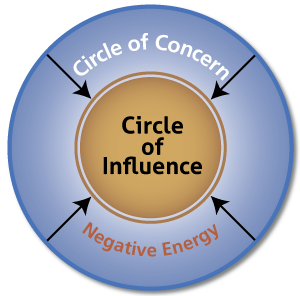
Circle of Influence
This is a 2-part activity.
Part 1: Based on the work of Stephen Covey, teams consider work issues that we have influence over and work areas that are concerns with seemingly no influence. Teams make lists of these two areas that will be debriefed with the whole group. Debriefing this activity involves thinking about what happens if we are consumed with our circle of concern and the negative energy that can surround us.
Part 2: Participants go back into teams, revisit their list of concerns, and identify how they can add influence in these areas. This debrief looks at when we focus on what we can’t influence, our circle of influence shrinks and when we focus on what we can influence, our circle of concern shrinks. Covey notes that highly effective people think and act primarily within their Circle of Influence.
Key Learnings:
- Review your circle of concern
- Learn how to limit what you can’t influence and focus on what you can influence
- How can you expand your circle of influence
- Focus on things you can control and don’t waste energy on the things you cannot
- The impact of negative energy in the work place when we are focused on the circle of concern

Circle Words
This activity could be used for team bonding, team building or team development and there are several ways this can be debriefed. Participants have a series of words that need to be placed in a specific order depending on how each word connects to another word. Topics that can be used to debrief include mindset, community, communication, decision-making, flexibility, energy levels, alternative solutions/approaches, time constraint. There are multiple options of complexity so that this activity can be used multiple times. Circle Words – Source: Adapted from Circle Words, Chris Cavert & Friends FUNDoing.
Key Learnings:
- Effective communication
- Working together as a team
- Problem solving
- Overcoming mindset

Communication Styles
This activity supports the Communication Styles self-assessment based on the work of Paul Mok, Training Associates Press. This examines four main communication styles: Intuitor, Feeler, Thinker and Sensor. Each of us have the ability to flex into each of the four styles, though we generally have a preferred style. These style differences can create challenges in the workplace as we each feel we are “right” in our approach. For us to be effective in our actions, we need to be aware of how we send and receive information through our communication.
Key Learnings:
- Understand your own communication style
- Understand the communication styles of others
- How to adapt your style to improve leadership and relationship results

County Fair
This is a logic puzzle in which teams review the situation and identify the winners of the County Fair. Problem solving in teams can be challenging, and if we leverage the skills of the team, we can find solutions that might otherwise be missed. Using the 13 clues provided, teams will solve the mystery of who baked each pie, and which prize each pie won. Adapted from content by Michelle Cummings.
Key Learnings:
- Overcoming our mindset when we feel we cannot solve a problem
- Leveraging the skills of the team
- Collaborating on challenges to develop solutions
DiSC Work of Leaders
In this 3-part activity, participants will have previously completed the DiSC Work of Leaders assessment and received their individual reports.
Part 1: Teams will be set up according to their DiSC style. Style teams will review a set of cards that have words corresponding to their style and, as a group, will select the top 5 cards that collectively, best describes the group.
Part 2: Teams will answer two questions about their style at work, which will highlight for each style the key differences in their preferred work environment.
Part 3: Teams will plot their DiSC style on a visual map. This activity will illustrate the impact of missing or dominant styles in the workplace.
Key Learnings:
- Understanding your own DiSC Style of Leadership
- Understanding all of the DiSC styles and triggers that might arise
- How to adapt your style to improve leadership results
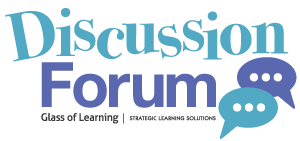
Discussion Forum
This online discussion forum can be used to capture notes from small groups on any number of topics. Participants use the activity as they would flipcharts to record their thoughts and ideas on a topic. The results are rolled up into one document that can be viewed by all participants for a debrief discussion.
Key Learnings:
- This can be used for any team discussion to collect information, concerns, actions, or results
- Questions in the discussion forum can be changed to suit the situation
- Results are available in a pdf format
Distortion
This experiential activity requires participants to communicate a drawing to someone else who will build the drawing, using the tools they have been provided. Based on roles in the activity, different views of the information are available to the different users. Participants use their communication skills to accomplish the task. This activity can also be used to examine our limiting beliefs about what we have control over.
Key Learnings:
- Build clear communication skills
- Improve team cohesion by planning how to complete a task
- Reframing mindset about what we have control over
- Using common language to share information
- Supporting team members in successful completion of a task
- Delivering customer satisfaction and achieving results
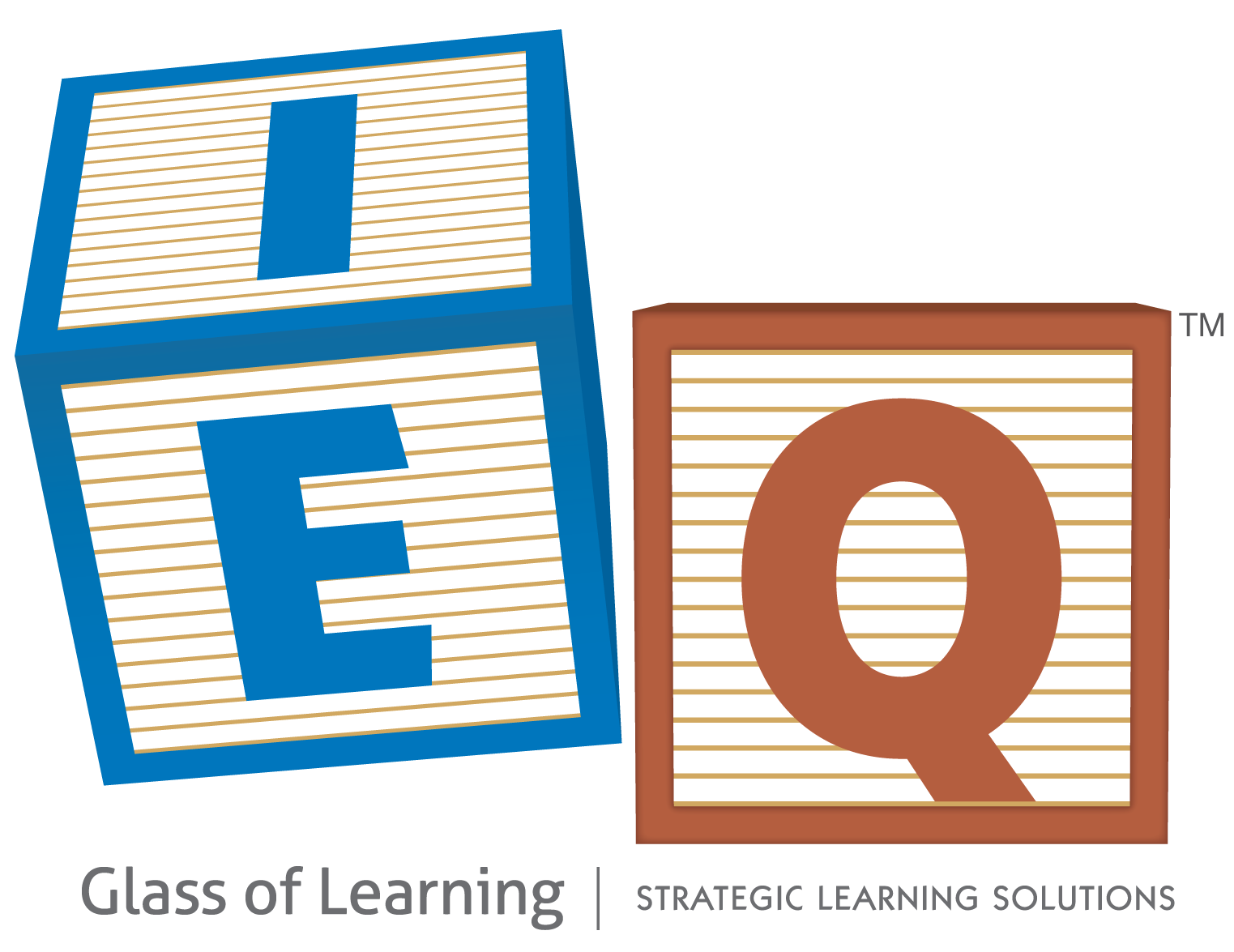
Emotional Intelligence
This activity is used to practice the EI model to ensure understanding and comprehension. The Emotional Intelligence model comes to life as participants review a series of scenarios of each quadrant demonstrating various levels of EI. This helps participants identify the EI behaviors of each quadrant.
Key Learnings:
- Clear understanding and identification of the Emotional Intelligence Model
- Developing effective relationships using Emotional Intelligence
- Increase understanding of Emotional Intelligence and the link to effective leadership
- Improving organizational performance through Emotional Intelligence

Expectations and Accountability
A 2-part activity that builds on the fundamentals of coaching. To lead others first we must set expectations.
Part 1: This activity helps participants work through the steps to setting clear expectations with their direct reports. In groups, they select a work topic that needs to be addressed and use the 5-step model to outline the expectations. This is debriefed to review understanding and application.
Part 2: The groups will take the expectations set, and work through the 5-step accountability model to establish how they will hold individuals accountable for expectations set. Information recorded for this activity will be sent as follow up to ensure application of the learning.
Key Learnings:
- Linking expectations and accountability to the fundamentals of leadership coaching
- Application and use of the 5 -steps to set clear expectations
- Application and use of the 5 -steps to foster accountability
- The impact of using these tools to ensure success within their department and organization
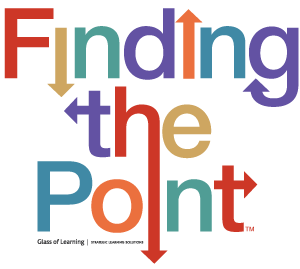
Finding the Point
Finding the Point is a quick (typically 15 minutes) activity to include in a workshop about creative thinking or creative problem-solving. This explores the idea of how our thinking skills can enable us to break old patterns and establish new actions. A collection of puzzle pieces, when properly assembled, will create a set pattern. Teams will explore reactions to their belief they have limited resources to successfully complete a task. This requires a new way of examining the situation to reach completion of the task. Adapted from Jim Cain Teamwork and Teamplay.
Key Learnings:
- Reframing the situation to see past our own frame of reference
- Innovative approaches to problem solving
- Overcoming our own mindset
- Collaborating with team members
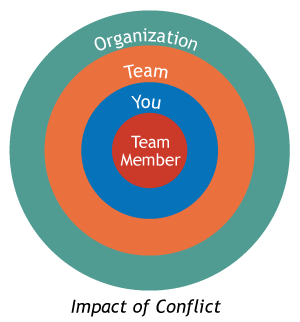
Impact of Conflict
The impact of conflict activity helps participants see how conflict has a ripple effect throughout the organization. Teams will review a set of conflict scenarios and together, discuss the impact these situations would have and possible solutions to address the situation. Upon review of the scenarios, teams will add notes to the screen recapping key learnings on the impact of conflict and solutions to manage conflict in the workplace. This information can be sent as follow up
Key Learnings:
- Impact of conflict – on you the leader, the team, and the organization
- The impact of not dealing with a difficult situation
- Strategies to resolve conflict and lessen the impact
- The role of the leader to address conflict

Managing Time
This managing time activity helps participants go through the experience of prioritizing daily tasks in the Priority Matrix. Participants will work in small groups to review a case study of a day in the life of a supervisor or manager (this can be customized to suit the audience). Teams will create a list of tasks from the case study and plot these in the Priority Matrix quadrants. While this is happening, a series of interruptions will appear on the screen that the group will need to deal with and add to the matrix. Participants need to consider these additional tasks are happening in real time as their day unfolds – which can mean that their priorities change. Teams will then provide overall recommendations for the leader to more effectively manage their time.
Key Learnings:
- Managing shifting priorities in a hectic work environment
- How to focus on important and not urgent tasks to avoid fire fighting mode
- Delegation of not important, not urgent tasks
- Recognition that not all issues are as urgent as they appear
- Effectively managing work time to ensure key tasks are completed on time

On Deck
In this activity, participants look at how we organize ourselves through an experience similar to sudoku. Each team has a deck of cards, and as a team they need to lay the cards out following specific criteria. Each round the format will change. Between rounds, a debrief will review team successes and challenges along with hints on how to establish patterns in a sudoku format. Teams will then define strategy to improve their results. Adapted from Playing with a Full Deck by Michelle Cummings.
Key Learnings:
- Improving communication and listening skills
- Finding solutions to improve time and process
- Developing group solutions to solve a problem
- Managing through chaos
- Changing process to improve performance

Peer to Boss
The distinction between being a peer and being a boss is critical to effective leadership and business success. This activity walks participants through a series of scenarios that demonstrate the challenging decisions that can come up between bosses and their employees who once were peers. In this “Choose your adventure’ style activity, participants choose between multiple choice answers related to each scenario.
Key Learnings:
- Understand how to better navigate the role of being a boss versus being a peer
- Develop the ability to make the right choices in your leadership role
- Tips on how to hold the right mindset when transitioning or developing your skills in this area
- Becoming aware of our individual roadblocks in the transition process
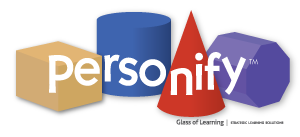
Personify
This activity highlights the fact that when we’re divided into teams, we often compete against each other instead of working together to achieve more. Two teams of participants will take turns placing their game pieces on a grid to gather the highest score possible. However, teams will generally block each other, thinking they want to get the most points possible.
Key Learnings:
- Working collaboratively vs competitively
- Maximizing results to benefit the whole team
- Sharing information rather than practicing knowledge is power
- Understanding who the real competition is
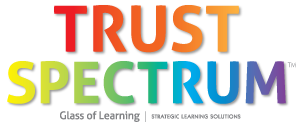
Trust Spectrum Scenarios
Real Stories of Truth and Trust
This activity highlights the fact that trust, for each of us, covers a spectrum. A series of real-life situations are examined and discussed to identify if we would give or withhold our trust from this leader. Individuals will have varying degrees of trust they would give in each situation and together teams internalize the impact on the work environment.
Key Learnings:
- Identifying key behaviors that improve trust on a team
- Examining behaviors that negatively impact trust on a team
- The implications for a leader when employees do not freely share their trust
Trust Spectrum Individual – evaluate trust in your work environment
Each person will review a series of actions members of their team do to support both the department and the leader. In reviewing these actions, individuals will assess if they would readily complete these actions for their leader and if their team would complete these actions for them.
Key Learnings:
- The impact on department and organizational performance when individuals do not freely share their trust
- How we are showing up as both an employee and a leader
- Obstacles that may be preventing trust in the workplace
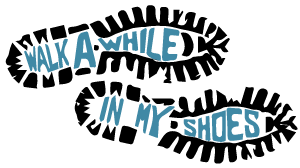
Walk Awhile in my Shoes
Using the book authored by Eric Harvey and Steve Ventura, participants gain a deeper understanding of the perspectives of employees versus managers on a variety of topics. In small groups, teams will read through a series of examples that build empathy, understanding and cooperation between different levels in an organization. This provides a new level of insight to participants. Choose from a list of topics to best suit your organization. Inspired by the writings of Eric Harvey and Steve Ventura.
Key Learnings:
- Appreciate that each area of work is no easier than another
- Don’t assume the worst of a manager or an employee
- Continue to perform your job as best you can and share insights along the journey
- Adopt the mindset that to be successful at work, we need managers and employees